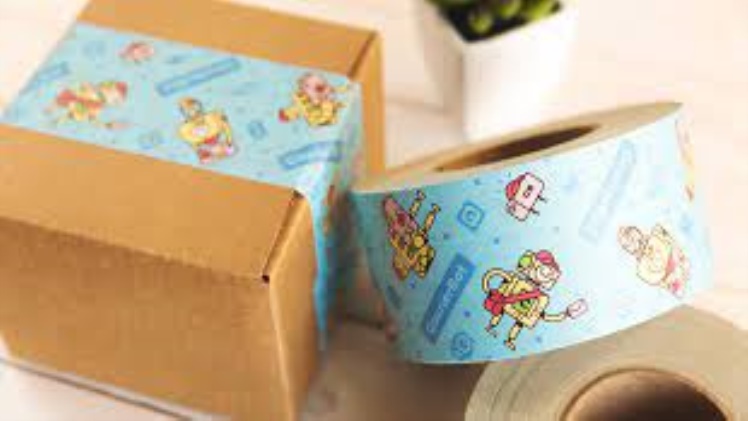Creating product packaging from the ideation stage to manufacturing is quite the process. It necessitates the collaboration of trained professionals, from quality control experts, packaging specialists & suppliers, marketing experts, etc. These professionals do lots of consultations, research, innovation, and experimentation behind the scenes. This whole process can be summed up in 3 critical stages:
-
The Ideation Stage: Conducting Market Research
How you package your product determines how consumers perceive its worth and usefulness. That’s why you cannot ignore the input of your target customer when designing your product packaging. You need to understand what they need and what appeals to them, especially concerning packaging shape, typography, images, and colors.
When conducting market research about the best packaging design to adopt, keep these considerations in mind:
- Color psychology is critical to marketing and branding. You need to know how customers feel about your brand colors. You also need to know whether your current colors have the potential to stand out in comparison to your closest competitors.
- Different demographics (based on age, gender, language, culture, etc.) have different tastes and preferences. For example, fun and festive colors (e.g. purple, red, and pink) appeal to youthful consumers but may not necessarily appeal to senior citizens.
- The environmental impact of packaging has a huge impact on consumers’ purchase decisions. How do customers in your target market/demographic feel about your packaging’s impact on the environment?
- Packaging colors mean different things to different audiences in different cultures. For instance, customers in the Middle East see green as a color of prosperity. However, green is seen as a color of bad luck in some South American cultures.
- You need to know whether your target customers want packaging they can repurpose or don’t mind discarding it after use. This will tell you the best materials to use and the best shape to adopt. If it’s a product that will be sitting in the refrigerator for a long time, a packaging design with an easy-to-pour spout and a stable base would be more functional.
- Your packaging has to match your product’s luxury level. If the target client considers your product to be high-end and luxurious, probably because of its pricing, you must deliver it in high-end and sophisticated packaging. You don’t want clients to feel like they’re overpaying for it.
- You need to know how customers feel about the typography on your current package designs. Do they think the font style, size, and structure are clear enough, legible, and visually attractive? Does the typography evoke the right feelings and emotions in the target market? Does it convey your intended message effectively?
- What’s the consumers’ perception of the graphics, brand logo, and brand identity displayed on the current packaging?
Bottom line: Gather as much data from the existing and target markets before you start redesigning your packaging. Some of the data-gathering techniques you can use include focus groups, interviews, discussions, online surveys, observation, etc.
-
The Design And Prototyping Stage: Leveraging Design Thinking Principles
Design thinking is when you get hands-on with packaging design after you’re done gathering ideas and insights. In other words, this is the stage where you turn ideas and insights into tangible prototypes that you think can work in real-world contexts. While you’re in the design thinking and prototyping phase, you should be guided by these 5 principles:
- Empathy: Purpose to address the challenges faced by your target audience. You already understand their challenges and pain points from the surveys, interviews, and observation sessions you conducted in stage one. Everything that you do ought to be user-centric.
- Definition: Define a clear problem statement and set your eyes on a fixed goal. This will provide guidance and direction as you implement ideas and experiment with potential solutions.
iii. Out-of-the-box thinking: As you innovate and experiment, you need to explore new angles and think outside the box. Attempt as many approaches as possible for this is how you’ll stumble upon an innovation.
- Prototype: Turn the most practical innovations into interactive, digital prototypes. Prototypes are “scaled-down” versions of the packaging concept you want to test. You will now have something tangible to test or share with manufacturers.
- Test: Share your prototypes with either real or representative users to get their opinion. They will interact with the prototype and share feedback. Their feedback will tell you whether your packaging prototype is okay or if it needs improvements.
-
The Manufacturing Stage: Collaborating With Manufacturers
The manufacturing process depends on so many factors including the quality of packaging material, the cost of these materials, manufacturing timelines, and the assembly technology to be used. Assembly can either be automated or done by hand.
You may need to enlist custom packaging services for a fast turnaround time. Custom packaging companies give you access to state-of-the-art amenities, which you can trust to deliver state-of-the-art packaging. Their overall immaculate packaging services guarantee safe shipping for your products, tamper protection, and an unbeatable experience for the consumer. In a nutshell, custom packaging manufacturers provide a solid return on your brand’s marketing investment.
Final word
For successful packaging in a competitive marketplace, your entire packaging development process has to be well thought-out from inception to when the customer opens it. You have to consider each step carefully and enlist the help of experts whenever necessary. Most importantly, you won’t achieve your packaging end goal without the input of your target audience. You must involve the customers right from the ideation phase.

